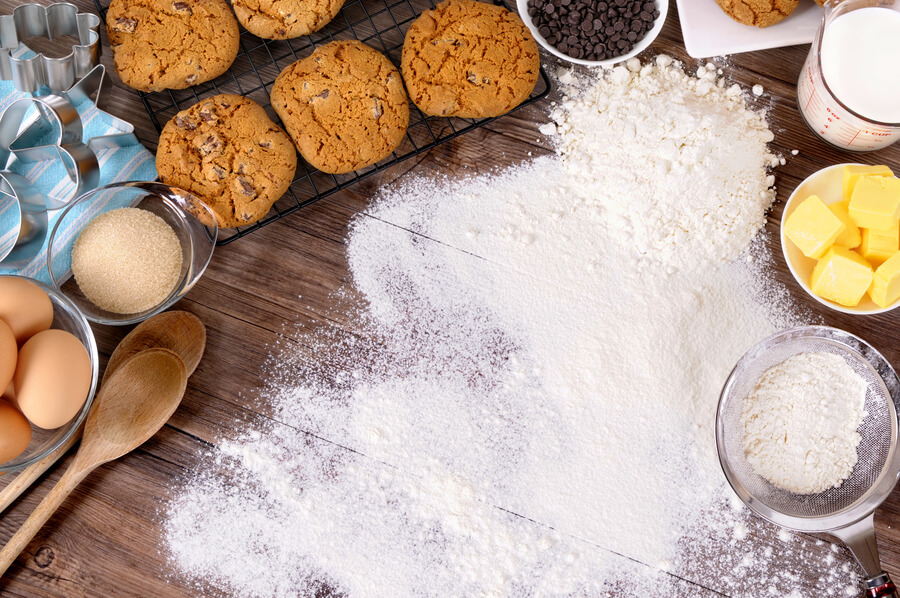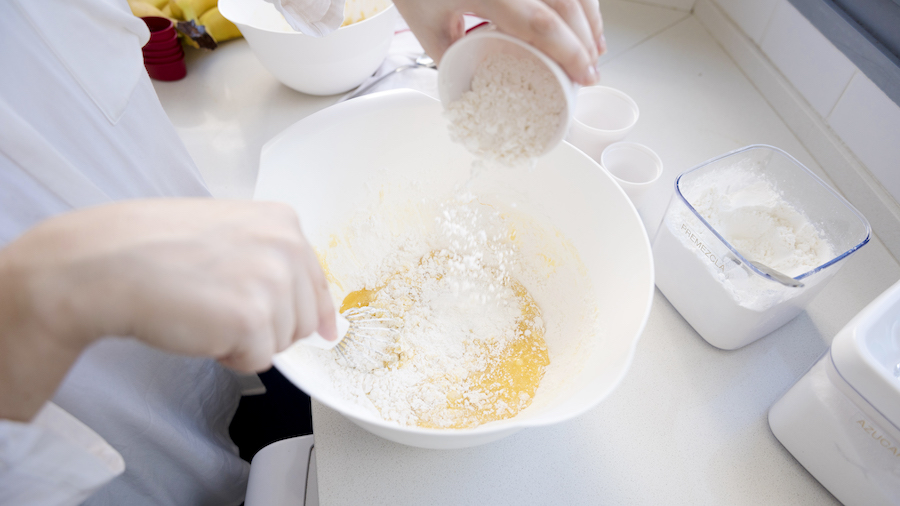You might only notice the distinction between baking soda and baking powder once you mistakenly use one instead of the other.

If you’re attempting a cookie recipe that requires either baking powder or baking soda, can you substitute one for the other? To answer this question, you must learn the difference between baking powder and baking soda.
Understanding the difference between Baking Powder and Baking Soda
First, it’s important to note the difference between the two. Baking soda is a pure alkaline compound, while baking powder is a mix of an acid and an alkaline.
Baking soda requires an acidic ingredient to activate it, but baking powder contains its acid. You can often substitute baking powder for baking soda, but only sometimes the other way around due to the acidity difference.
Can you Substitute Baking Powder for Baking Soda?
When using a cookie recipe that calls for baking soda, can you use baking powder instead? The answer is yes.
Try using baking powder as a substitute for baking soda. However, remember that baking powder contains additional ingredients that baking powder does not have.
To substitute, you need to use three times the amount of baking powder stated in the recipe. Baking soda and acid begin to react as soon as they are mixed. It is, therefore, preferable to put batters and doughs in the oven right away when making recipes that call for baking soda.
Otherwise, what can you do if a recipe calls for baking powder but you only have baking soda? This is more complicated. In this case, you can create a substitute by adding an acidic ingredient. You can use ingredients like cream of tartar or buttermilk.
Generally, you’d use 1/3 teaspoon of baking soda and an acid for each teaspoon of baking powder in the recipe.
To be clear, it’s best to avoid substitutions if you can. However, if you find yourself in a bind, there is one alternative option you can use in your kitchen.
For example, you realize you’re out of baking powder while making your cookie batter. It is crucial to remember that these substitutes can work decently. But it won’t produce the same results as the original leavening agent specified in the recipe.
Things to Know Before Substituting Baking Powder for Baking Soda
Before substituting baking powder for baking soda, these are some key things to remember.
Differences in Taste and Texture
Be prepared for potential flavor and texture changes in your cookies when using baking powder. The cookies may turn out slightly different than you expected.
One potential downside of substituting baking powder for baking soda is the risk of your baked goods turning bitter. Therefore, you should avoid using an excessive amount when making this substitution.
Chemical Differences
Baking soda is a base, while baking powder contains both an acid and a base. Before substituting one for the other, understand that this can affect the chemical reactions in your recipe.
Adjust the Proportions
Take note of the difference in proportions to maintain the acid-base balance in the recipe. The standard rule of thumb is to use three times the amount of baking powder as baking soda in the recipe.
For example, if the recipe calls for one teaspoon of baking soda, use three teaspoons of baking powder.
The key takeaway is to use the appropriate ratio of baking powder to replicate the leavening effect of baking soda.
Also, it would help if you accounted for the acidic elements in your recipe. Make sure to read the label on the product carefully. Check that you’re using the correct ingredients in the precise proportions specified in the recipe.
It Depends on the Recipe
Substituting baking powder for baking soda or vice versa could work, but it depends on the recipe and acidity level. Cookies made with baking soda tend to be spread out, but those with baking powder are usually puffier and lighter.

Experiment First
It’s a good idea to do a small test batch first. This is to see how the substitution affects the final result. Some recipes are more forgiving with substitutions, and others are not. Experimenting with established recipes might yield unpredictable results.
Double-Acting Baking Powder
You’ll mostly find a baking powder that is described as “double-acting.” This means it releases carbon dioxide gas when it comes into contact with liquid and when exposed to heat. This can affect the rising process in more complex recipes that depend on specific timing.
Always Keep Both in your Pantry
Do you frequently find yourself in this situation of needing a substitute? Then, keep both baking soda and baking powder in your pantry. This is to ensure you’re always well-prepared for any recipe. If a recipe calls for baking soda, you have it ready to help your pastry rise properly.
If a recipe requires baking powder, you won’t have to worry about the need for an acidic ingredient. This minimizes the chances of needing to make last-minute substitutions.
Other substitutes for Baking Soda in Cookies
Baking powder is the most common substitute for baking soda in recipes. However, you can use one of the following options.
Buttermilk
You can use a liquid acidic ingredient, like buttermilk, sour cream, yogurt, lemon juice, vinegar, or maple syrup. Otherwise, you can use dry ingredients like natural cocoa powder or brown sugar. This can increase the amount of this ingredient to help with leavening. However, this may only work for some cookie recipes.
Self-Rising Flour
If your recipe calls for flour and baking soda, you can use self-rising flour as a replacement. Self-rising flour already contains baking powder and salt. You can adjust the amounts of these ingredients accordingly.
Potassium Bicarbonate
Potassium bicarbonate is another leavening agent that can replace baking soda. Use it in a 1:1 ratio. If the recipe calls for one teaspoon of baking soda, use one teaspoon of potassium bicarbonate.
You must maintain the acid-base balance in your batter. This is to ensure your baked goods rise properly. Note that these substitutions might affect the flavor and texture slightly.
Always follow the original recipe if you can afford to. Substitutions can work when you’re in a pinch. However, you’ll achieve the best results when you follow the original recipe.
Making your Baking Powder
Yes, you can make your baking powder at home with just two everyday ingredients—baking soda and cream of tartar. Combine the baking soda and cream of tartar in a bowl.
Mix them thoroughly. This creates your homemade baking powder, and you can use it immediately in your recipe.

Final Thoughts,
Baking powder and baking soda are not entirely interchangeable when following the cookie recipe. This is because they have different purposes in baking and different proportions.
Baking soda is a base and requires an acid (like buttermilk or vinegar) to activate. On the other hand, baking powder contains both an acid and a base to work independently.
Generally, it’s best to follow the recipe as written, but if you must make a substitution, follow this guide. When substituting, be prepared for some trial and error.
